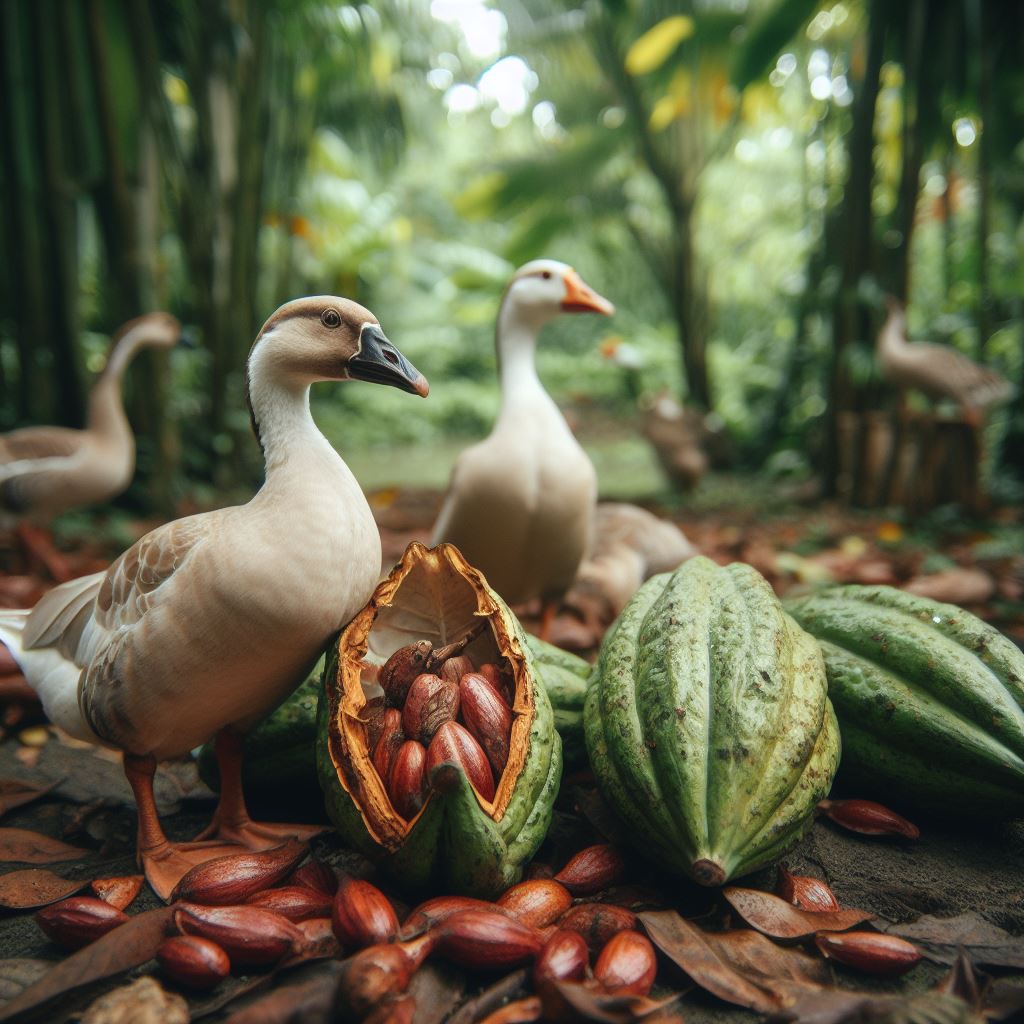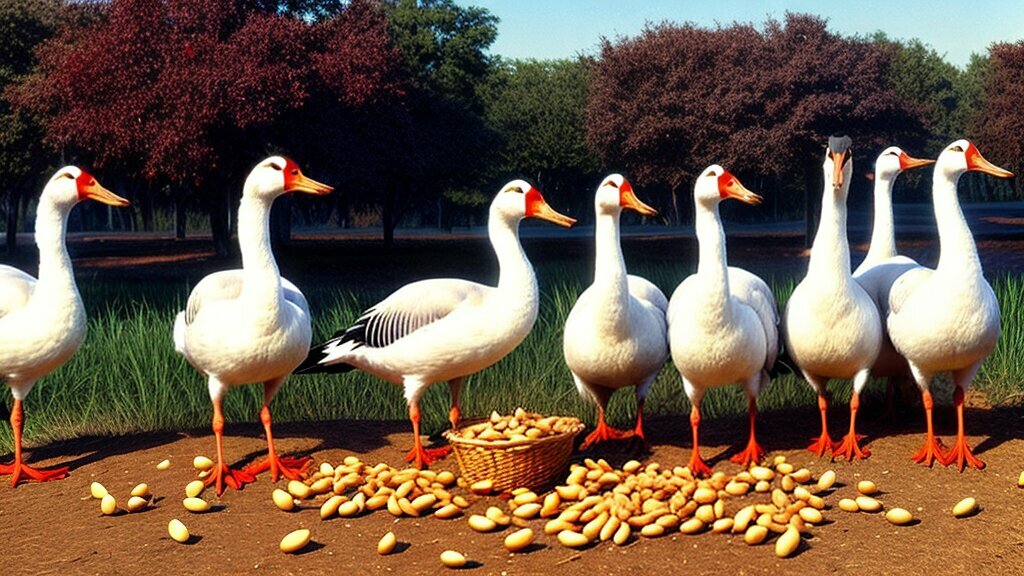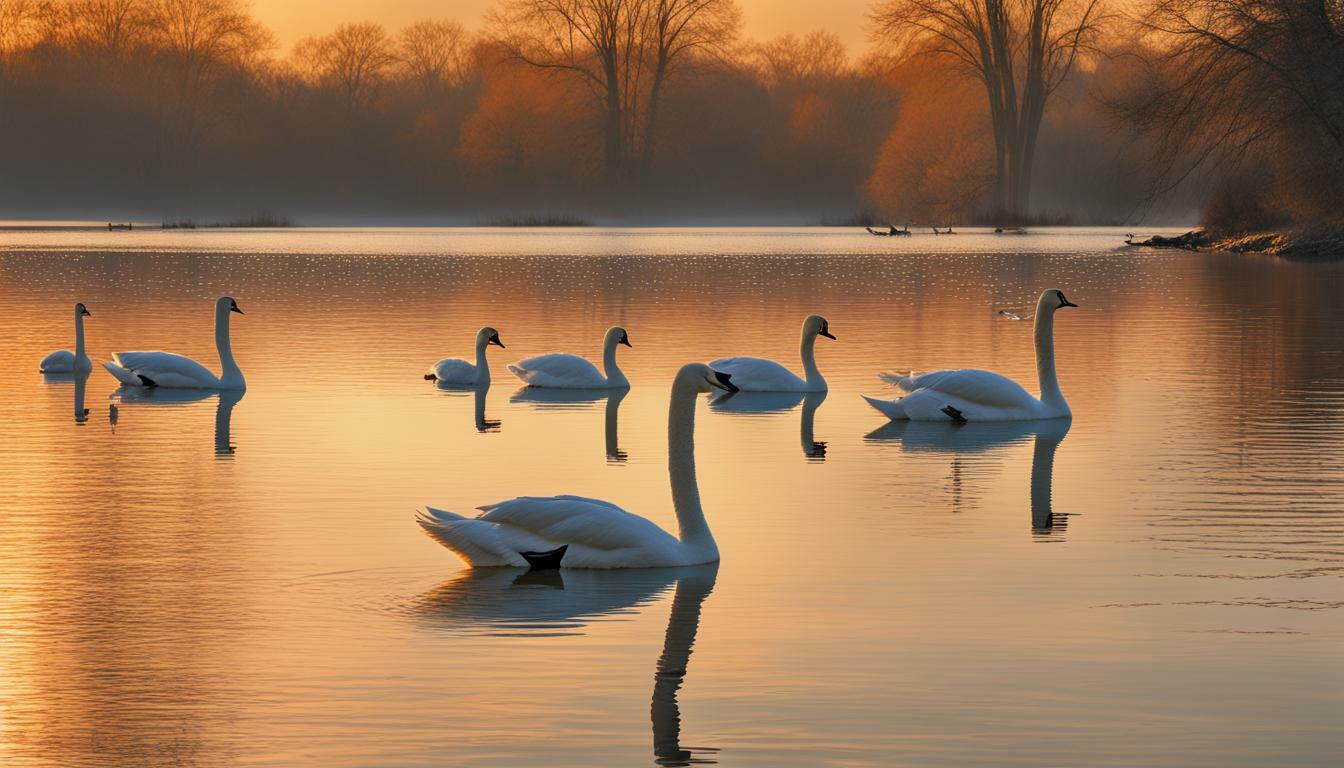Do Geese Eat Grass? Find Out Now

Table of content:
- What Is the Main Component of a Goose’s Diet?
- What Types of Grass Do Geese Prefer?
- How Much Grass Does a Goose Eat Daily?
- Do Geese Consume Other Vegetation Besides Grass?
- Why Do Geese Graze on Lawns and Grass?
- What Times of Day Do Geese Graze?
- Do All Kinds of Geese Around the World Eat Grass?
- Do Geese Eat Grass in Winter?
- How to Discourage Geese from Eating Grass in Your Lawn
- Are Grass Clippings After Mowing Harmful for Geese?
- Final Thoughts
Geese are commonly found grazing on grass, making lawns, parks, and open fields their dining room. But do geese only eat grass? Or do they consume other vegetation as well? Here is a deep dive into geese diets, their favorite grass varieties, how much they eat, and tips for protecting your lawn.
What Is the Main Component of a Goose’s Diet?
The primary food source for geese is grass and grassy vegetation. Geese are herbivores, meaning they feed exclusively on plant matter rather than meat.
Specifically, geese prefer to eat:
- Grass blades
- Grass seeds and stems
- Aquatic plants like seaweed or water grasses
- Low shrubs and berries
- Pieces of lettuce or greens
- Cereal grains like wheat or barley
Grass makes up about 80% of a goose’s diet. They spend much of their daily grazing time consuming different types of grass.
Geese have flexible necks which allow them to graze while walking or swimming. They use their beaks like a pair of scissors to bite off pieces of grass and vegetation.
What Types of Grass Do Geese Prefer?
Geese enjoy grazing on various cool season lawn grasses:
- Ryegrass: A favorite of geese, perennial ryegrass is lush and green with tender blades and shoots.
- Fescue: Geese eat several varieties of fescue grass, including tall fescue for its coarse texture.
- Bentgrass: Fast-growing bentgrass provides geese with plenty of young shoots and thick mats of food.
- Bluegrass: Geese consume Kentucky bluegrass as well as annual bluegrass weeds.
- Bermudagrass: In warmer climates, geese graze on bermudagrass lawns or pastures.
Geese tend to prefer grass that is fresh, newly grown, and packed densely together in lush lawns. This allows them to maximize their grazing efficiency.
How Much Grass Does a Goose Eat Daily?
An adult goose needs to consume about 0.5-1 lb of fresh grass per day. This equates to a large volume of grass, up to 20% of their body weight.
Geese graze for 6-8 hours per day, mostly in the early morning and evening. During the peak of summer when grass is growing fastest, a hungry flock can quickly decimate a lawn.
Some key facts on goose grass consumption:
- Goslings eat the most grass relative to body size, up to 40% per day.
- Males and larger goose varieties consume more grass overall.
- Egg-laying females have increased nutritional needs and eat more grass.
- Grass intake varies based on availability, growth cycles, and nutritional content.
- Geese graze more in spring and summer when grass is abundant and tender.
Do Geese Consume Other Vegetation Besides Grass?
While grass is their staple, geese do supplement their diets with other plant foods:
- Seeds & Stems: Geese eat the seed heads of grasses as an excellent source of carbs and protein. They also consume fibrous grass stems.
- Aquatic Plants: Geese nibble on underwater sea grasses and algae, especially when breeding near water.
- Garden Greens: Geese enjoy grazing on lettuce, spinach, and other greens if gardens are accessible.
- Grains: Corn kernels, wheat, barley, and oats provide geese with extra carbs and calories.
- Fruit & Berries: Geese occasionally snack on berries or windfall fruit found in fields.
A diverse plant diet provides geese with a broader range of vitamins, minerals, and phytonutrients. Even when grazing on grass, they select the most nutritious shoots and leaves.
Why Do Geese Graze on Lawns and Grass?
There are several key reasons why geese love munching on grassy residential lawns and parks:
- Abundant food source: Lawns provide continuous access to plentiful, high-quality grass.
- Fresh regrowth: Lawns are regularly mowed or watered, stimulating tender new grass growth.
- Easy access: Landscaping and mowed areas offer open grazing access for geese.
- Nutrient-rich soil: Fertilized soils yield faster-growing, more nutritious grass.
- Safety: Parks and lawns offer safe terrain away from predators.
- Water nearby: Geese prefer grazing near ponds or waterways for drinking and escape.
Basically, a well-kept lawn is an all-you-can-eat goose buffet and an ideal feeding habitat. Limiting lawn access is key to deterring geese.
What Times of Day Do Geese Graze?
Geese follow a consistent daily routine when it comes to grazing:
- Early morning: Just after sunrise, geese actively graze for 2-3 hours.
- Mid-day: Geese spend midday resting, preening, or drinking water. Little grazing takes place.
- Late afternoon: Foraging resumes and peaks before sunset, for another long evening feeding.
- Overnight: Geese sleep and digest their food. No nighttime grazing occurs.
Adjusting watering or mowing schedules to avoid goose feeding times can minimize damage. Stopping evening grazing lets lawns recover overnight.
Geese graze most heavily in the coolest parts of the day since eating generates body heat. During hot mid-days, they seek shade and water.
Do All Kinds of Geese Around the World Eat Grass?
The majority of goose species worldwide consume grass and greens as their main diet:
- Canada geese are almost exclusively herbivorous, feeding on grasses, sedges, grains, and berries.
- Snow geese graze on marsh grasses when breeding in the Arctic tundra.
- Barnacle geese rely on grazing on seeds and shoots of Arctic grasses.
- Brant geese feed on eelgrass and seaweed in coastal estuaries.
- Egyptian geese inhabit wetlands and graze on adjacent grassy banks.
- Cackling geese breed in Alaska and migrate to eat prairie grasses and farm grains.
The only exception among common geese is the Emperor goose, which gets up to 50% of its diet by diving for mussels, clams, and other mollusks. But they still graze on sedges, grasses, and aquatic plants.
Do Geese Eat Grass in Winter?
Geese need access to fresh greens year-round to meet their nutritional needs. In northern climates during winter, geese adapt their grazing habits when snow covers the grass.
- Migration: Some geese migrate to warmer areas with unfrozen ground and accessible grazing.
- Foraging: Geese eat leftover harvested corn and wheat grains in agricultural fields.
- Coastlines: Sea and shoreline grasses remain exposed even when inland areas are frozen over.
- Roadsides: Geese graze on grass along plowed roads, runways, and other cleared areas.
- Winter greens: In urban areas, geese feed on winter lettuce, kale, or other garden greens.
- Energy conservation: In extreme cold, geese lower their metabolism and eat less until more food is available.
While snow cover limits grazing, geese are resourceful and mobile enough to find the greens they need to survive.
How to Discourage Geese from Eating Grass in Your Lawn
If pesky geese are turning your lawn into an all-inclusive resort and buffet, here are some methods to deter them:
- Install a physical barrier like fencing, hedges, or plant covers.
- Sprinkle your grass with citrus-scented repellents.
- Let grass grow taller, which geese don’t like.
- Stop fertilizing and watering to reduce palatability.
- Scare geese away with dogs, noise deterrents, or sprinklers.
- Place decoys of predatory hawks or geese to give the impression of danger.
- Apply goose repellent such as anthraquinone on and around your lawn.
- Plant unpalatable grasses like tall fescue or cultivars with endophytes.
With persistence, you can reclaim your lawn and make it far less appealing to grazing geese.
Are Grass Clippings After Mowing Harmful for Geese?
Geese often gather to graze on freshly cut grass clippings after a lawn is mowed. This can create concern about whether the clippings may cause illness if consumed.
However, grass itself contains no toxins or substances inherently dangerous to geese. The main risks of mowed clippings involve:
- Spoiled clippings: Heat and moisture can cause rapid mold growth in clippings which could cause digestive upset.
- Pesticides: Yard chemicals on grass can be toxic to geese, especially herbicide residues.
- Lawn debris: Ingesting clippings along with dirt, sticks or litter may obstruct digestive tracts.
- Overfeeding: Like any food source, excessive gorging on clippings can lead to weight issues or metabolic disease.
As long as clippings are fresh and no toxic chemicals were recently applied, grazing geese likely face minimal health risks from lawn clippings. Still, moderation is advised.
Final Thoughts
When you see a gaggle of geese nibbling their way across a field or manicured lawn, they are simply following their evolutionary programming to seek out tender grass shoots. Understanding the specifics of geese diets and grazing habits allows us to coexist with these prevalent waterfowl visitors who depend on our grassy spaces for sustenance.
Welcome. I’m Adreena Shanum, the proud owner of this website, and I am incredibly passionate about animals, especially poultry. I founded adreenapets.com as a labor of love, stemming from my desire to share my knowledge and experiences with poultry enthusiasts worldwide.




